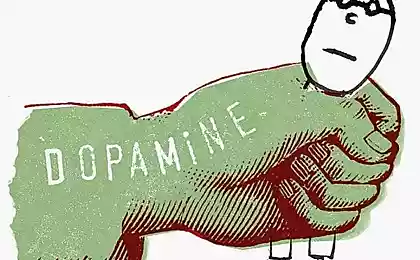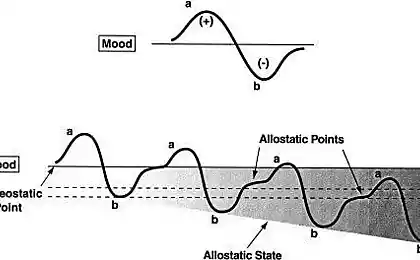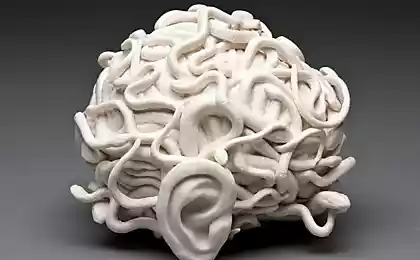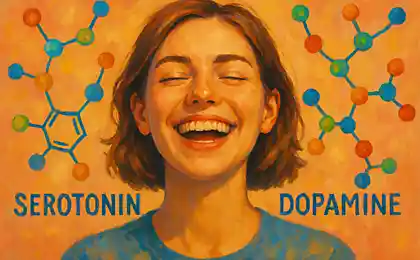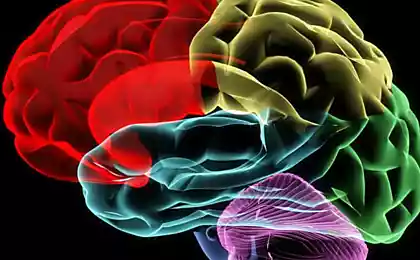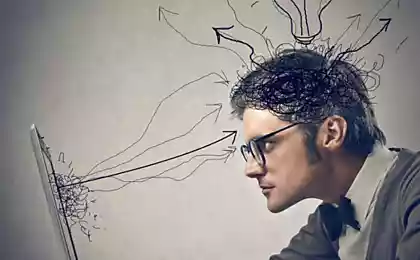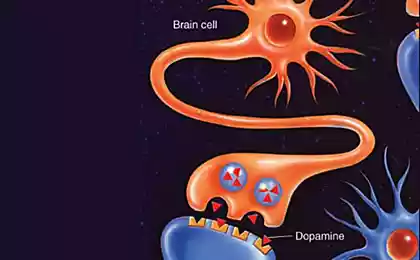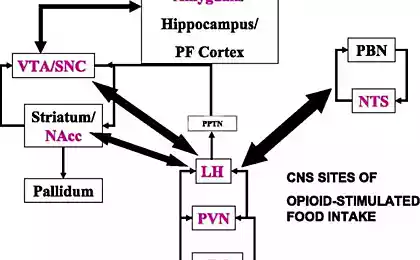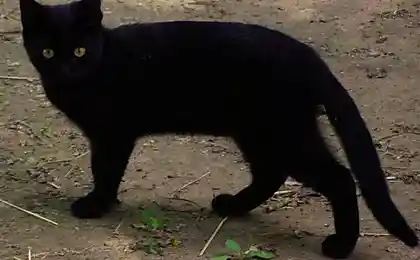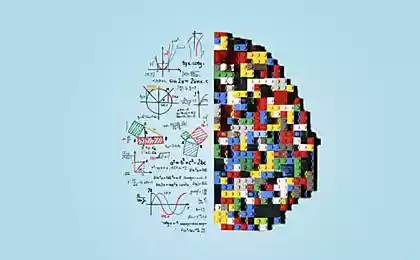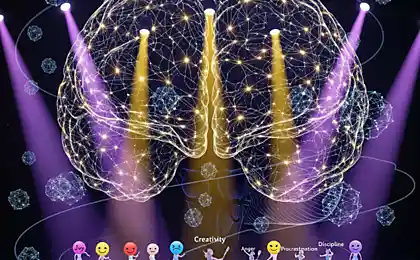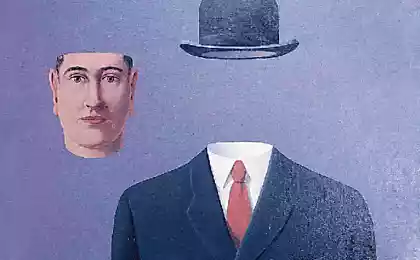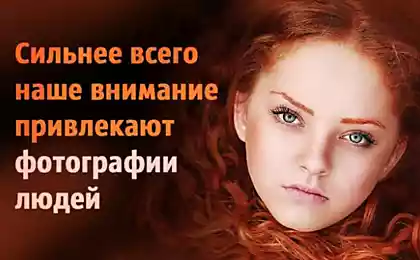501
Chaos as decrypted in order: what is apophenia
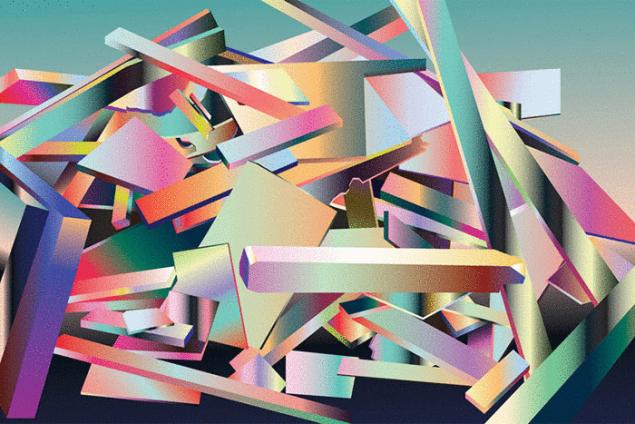
© Lesser Gonzalez Alvarez
What is the relationship between creativity, talent, paranoia, belief in conspiracy theories and delirium? To answer this question, published a translation of an article about the unique phenomenon apophenia.
In the first Chapter of the book My struggle by the Norwegian writer Karl Ove Knowshon eight-year-old boy notices the sea Ghost. He watches a television program about the rescue operation: "the overcast sky, gray-green waves — heavy but calm" — when suddenly on the surface of the water, "manifested the contour of the face".
It's easy to assume that the main character is both creative and troubled personality. His agile mind finds in the chaos of the orderly forms, but these forms are illusions. Even Shakespeare wrote: "Lovers, madmen and poets / Of one's imagination fused!" The imagination creates pictures in the air "shadows bestows the abode, and the title." Boiling the consciousness of the Creator can be a huge help, and, like the foaming gray-green waves from the novel, with danger. The results of recent studies indicate that the inspired metaphors, episodes of delusion, the belief in the supernatural or conspiracy theories can have the same source. Its scientific name is apophenia.
German psychiatrist and neurologist Klaus Conrad coined the term "apophenia" (from the Greek ἀποφαίνω — "make explicit") in 1958 to describe acute forms of schizophrenia, when the patient finds that communication and shared values between totally unrelated phenomena. Unlike epifanii — experience a world of interconnectedness, apophenia — incorrect realization. Swiss psychologist Peter Brugger introduced the term into the English language when he wrote the Chapter in the book "2001 book of ghosts and poltergeists". He said that apophenia — the result of the inadequacy of human knowledge, "the growing tendency to find order in random shapes", "unwarranted linkages", "misconception, adopted as a revelation." In an interview with the researcher adhered to the preferred wording: "Apophenia is a tendency to obey the coincidences of meaning".
Remember the so-called error of player who thinks that reads "cosmic logic" in the results throw coins, make your bet and lose cash.
In mathematical statistics the problem apophenia is called error of the first kind, or "false positive". It means the faith that something is real, when in fact it is not based on incorrect factual model. The opposite error — the second kind consists in attributing genuine relationships casual.
Errors of the first kind gave some individuals an advantage in survival: someone who takes every rustle in the grass behind the tiger's movement, lasts longer naive youngster, to write off all the noises on the excitement of the wind. The theory says that the human brain has become a "machine of beliefs" and "machine recognition" due to the messy sensory activity in relation to meaning and understanding. Humanity saw the image of the virgin Mary in grilled cheese, and built a conspiracy theory of random events and a whisper in the airwaves. Sometimes false positive distortion create a continuum of perception that helps to think they are necessary, but not dangerous. When someone sees the lunar disc or a frowny face in a fluffy cloud — white lamb, consciousness just makes the world more diverse and beautiful. Sometimes even chaos calls for order.
However, apophenia can lead to a false, destructive conclusions. Remember the so-called error of the player, reflecting the view that in the sequence of chance past events affect future. The player thinks that reads "cosmic logic" in the results of the throw of the coin — "heads, tails, tails" — make your bet and lose cash. Someone connects the pieces of news and concludes that the September 11 attacks organized by the government of the United States; similarly, the child sees the glow of headlights on the wall and takes them for UFO signals.
Apophenia remains double-edged: it is rooted property of consciousness that underlie some adaptive abilities, able to reward the man the flights of fancy, and plunge into the darkness of paranoia and stupidity.
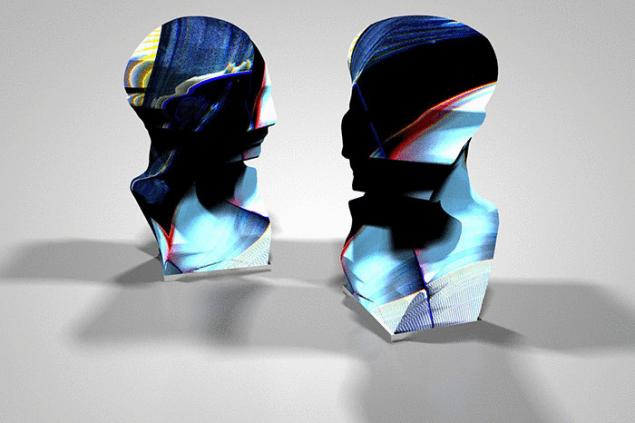
In 2001, scientists from the KEY Institute for Brain-Mind Research in Zurich said that "hyperactivation knowledge" that led to the belief in magic and psychic phenomena", as well as the resulting deviation in thinking is a unique expression of creativity. Defenders of the phenomenon quoted by Leonardo da Vinci, exhorted students: "Look at walls covered with stains... deliberately imagining the scenes, you can see stained landscapes, adorned with mountains, rivers, rocks and trees. You will clearly see the line the spacious valleys and hills... all kinds of the battle, figures with lively gestures and strange faces, dressed in amazing clothes, all the infinity of things, forms which you will be able to discern."
Psychologists also drew a connection apophenia and mental disorders: not only the poets and inspired people make noise for the voice — this applies to those who believe in witchcraft, Bigfoot, or the bodily aura. Most often it is people suffering from schizophrenia, manic-depressive psychosis or PTSD.
According to the researchers from Universitetskaja College London, "there is a relationship between the various manifestations of schizophrenia and the ability to establish regularities between random events and find meaning in coincidences". Participants in one experiment were divided into groups according to their belonging to a particular isotype defined by the personal scale of propensity to psychosis. Volunteers watched animated videos in which two figures crossed the screen. In one of them they were moving independently from each other, in another one of the forms like "pushing" another. Answering the question whether there is a correlation between movement of the figures, people with high levels of schizotypy much more likely to answer "Yes" even when it was on the first video. In another situation, people who are prone to delirium, attributed to the ability of thinking triangles, erratically floating on the monitor screen. They argued that one triangle "chasing" a second — that's why the first "running away" from the pursuer, with some curiosity "sneak up" to him. In a similar study, patients with paranoid schizophrenia, argued that the triangles are "deceiving" each other, like members of the conspiracy.
"People unite apophenia with hallucinations, as if it belongs only to the realm of the senses. But the meaning is generated by a variety of sensory and cognitive processes. Its production is much more complicated than we think
The results of brain scanning performed by Brugger and his colleagues point out that the reason apophenia may be excessive work of the right hemisphere. Neural link it is responsible for the language of metaphor and Association, keeping knowledge in more free form than the neurons in the left hemisphere. When one concept flashes in the right hemisphere, consciousness can occur and the associated concept, creating the illusion of a meaningful connection. A few years ago, Brugger conducted a study in which people observed a flash of random points in the field of view on the right and left so that the image perceived by the right and left hemispheres of the brain. Those who watched the dots on the right, often perceived as a structure or pattern, and "left-hemisphere" group contemplated anarchy.
Another possible culprit apophenia is dopamine. In 2002, the test showed that people with higher dopamine levels often find meaning in coincidences. When the group of skeptics given the drug l-DOPA that raise dopamine levels, during certain tasks, they behaved exactly the same as the group of believers. When the Brugger introduced the dopamine of healthy adult men, they often noodleswing similarity between random pairs of shapes.
Such studies quite a lot, what can be said about the identification of dependencies apophenia and manic-depressive psychosis. One sign of this respect was the fact that patients with TIR were great with the creative tests, and gave the impression of "intuitive people with an open mind" which results in surprising associations. (Though Brugger did not study the relationship apophenia and bipolar disorder, he said, "In a manic state, everything seems bound together"). One of the symptoms of mania is Popenchenko the nature of the linguistic disorder known as "ringing" (clanging) — when words are connected not in meaning but in sound (for example, "Gran, pan, fan, clan, etc.).

Whether suffered disorder known American feminist and writer Charlotte Perkins Gilman? There is every evidence that her autobiographical story"the Yellow Wallpaper" written under the influence of postpartum psychosis. The action revolves around a housewife who begins in their own interiors to see the illusive and illusory figures. "...The pattern sticks out like a bent neck and two bulbous eyes. They sort of look at you bottom-up, " prophesied the crazy one in this terrible Popenchenko work. By the way, the writer Virginia Woolf seriously confused bird chirping and the Greek language.
Articles on post-traumatic stress also lead to the thought apophenia. Research Margaret McKinnon and Brian Levin showed that people with the Vietnam syndrome often cut off the negative parts in his memoirs. That is why a woman after an exhausting and scary landing plane was told not only what he was dressed as a flight attendant, but when she first sat behind the wheel of a car. The fact that her brain creates an illusory connection between these facts and the recollection of the first automatically triggered the memory of the second.
Although apophenia long been considered a mistake of perception, Brugger asked the question and how it affects human memory. "People unite apophenia with hallucinations, as if it belongs only to the realm of the senses. But the meaning is generated by a variety of sensory and cognitive processes. Its production is much more complicated than we think" — says the scientist.
One has only to turn off the imagination and people will be in the dark like the hero of the poem by Wadsworth, not illuminated the cave with his torch.
Former naval officer David Morris supported these words. He wrote the book"Devil's time" exposed "a biography of post-traumatic stress disorder". Apophenia not only became the organizing concept in his text, but also a key phenomenon in the real military experience: "In war you will see people with a heightened sense of superstition, people trying to deal with the uncertainty of death". For example, the Morris believed that there is a double-DoppelgangeR In his book the writer claimed that the devastating events that change the world, plunging the survivors into a frenzy of rethinking, opening up each thing again: "Trauma disrupts the connection of man with the universe. He is no longer able to perceive the moral and social order — as if the reality turned into something paranormal. Victim consciousness is on the verge of explosion, it is overwhelming: "Why try to explain what happened? What do the laws of cause and effect?"
Sometimes the military encourage these "overload". Official U.S. manual on counterinsurgency encourages soldiers to pay attention to the intangible environment": the atmosphere on the streets, the presence of children playing, microevents and their own intuition. "The military must constantly be on the lookout because of this atmosphere," added Morris, revealing a sticky problem apophenia, its pros and cons. "How to separate the degree of caution that can save a life, from that which turns into madness?"
When apophenia is good, and not harm? One has only to turn off the imagination and people will be in the dark like the hero of the poem by Wadsworth, not illuminated the cave with his torch. Regardless of the assessments "good" and "bad" you may recall that Western culture still cherishes notions of exclusivity geniuses, describing the madness in a romantic way. What is this — a coincidence or something more?
Source: theoryandpractice.ru
